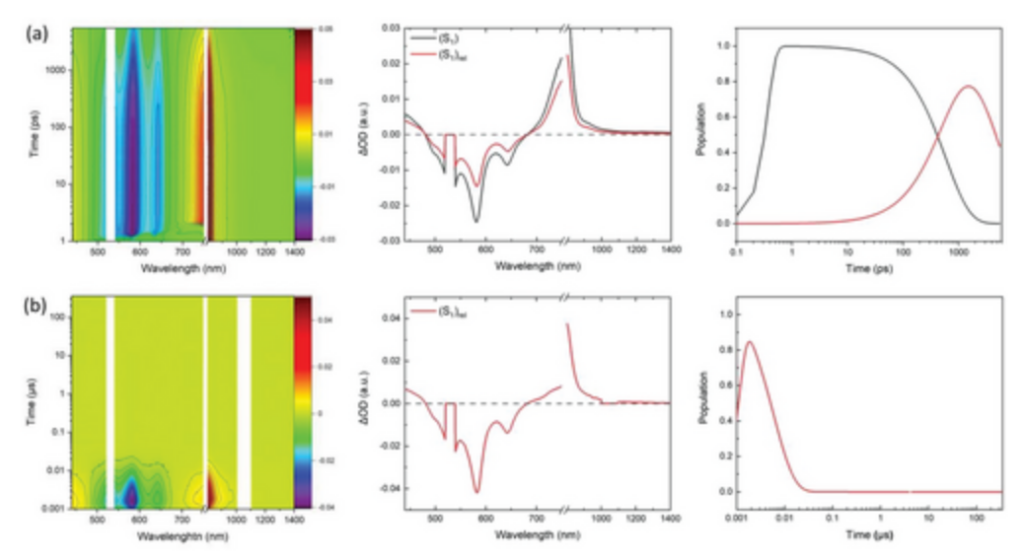Bo, Y., Hou, P., Wan, J., Cao, H., Liu, Y., Xie, L., Guldi, D. M., Adv. Mater. 2023, 35, 2302664. https://doi.org/10.1002/adma.202302664
Exciton coupling in molecular aggregates plays a vital role in impacting and fine-tuning optoelectronic materials and their efficiencies in devices. A versatile platform to decipher aggregation-property relationships is built around multichromophoric architectures. Here, a series of cyclic diketopyrrolopyrrole (DPP) oligomers featuring nanoscale gridarene structures and rigid bifluorenyl spacers are designed and synthesized via one-pot Friedel–Crafts reaction. DPP dimer [2]Grid and trimer [3]Grid, which are cyclic rigid nanoarchitectures of rather different sizes, are further characterized via steady-state and time-resolved absorption and fluorescence spectroscopies. They exhibit monomer-like spectroscopic signatures in the steady-state measurements, from which null exciton couplings are derived. Moreover, in an apolar solvent, high fluorescence quantum yields and excited-state dynamics that resembled DPP monomer are gathered. In a polar solvent, the localized singlet excited state on a single DPP dissociates into the adjacent null coupling DPP with charge transfer characteristics. This pathway facilitates the evolution of the symmetry-broken charge-separated state (SB-CS). Notable is the fact that the SB-CS of [2]Grid is, on one hand, in equilibrium with the singlet excited state and promotes, on the other hand, the formation of the triplet excited state with a yield of 32% via charge recombination.

Bo, Y., Hou, P., Wan, J., Cao, H., Liu, Y., Xie, L., Guldi, D. M., Adv. Mater. 2023, 35, 2302664. https://doi.org/10.1002/adma.202302664
Exciton coupling in molecular aggregates plays a vital role in impacting and fine-tuning optoelectronic materials and their efficiencies in devices. A versatile platform to decipher aggregation-property relationships is built around multichromophoric architectures. Here, a series of cyclic diketopyrrolopyrrole (DPP) oligomers featuring nanoscale gridarene structures and rigid bifluorenyl spacers are designed and synthesized via one-pot Friedel–Crafts reaction. DPP dimer [2]Grid and trimer [3]Grid, which are cyclic rigid nanoarchitectures of rather different sizes, are further characterized via steady-state and time-resolved absorption and fluorescence spectroscopies. They exhibit monomer-like spectroscopic signatures in the steady-state measurements, from which null exciton couplings are derived. Moreover, in an apolar solvent, high fluorescence quantum yields and excited-state dynamics that resembled DPP monomer are gathered. In a polar solvent, the localized singlet excited state on a single DPP dissociates into the adjacent null coupling DPP with charge transfer characteristics. This pathway facilitates the evolution of the symmetry-broken charge-separated state (SB-CS). Notable is the fact that the SB-CS of [2]Grid is, on one hand, in equilibrium with the singlet excited state and promotes, on the other hand, the formation of the triplet excited state with a yield of 32% via charge recombination.